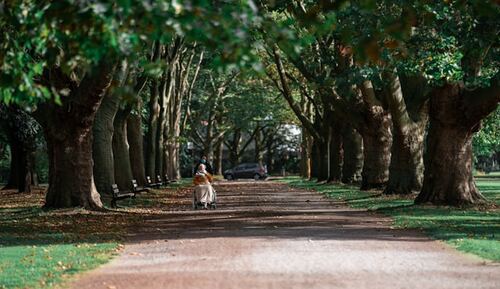Introduction to Air Quality in Senior Living
In senior living environments, providing optimal air quality is not merely a beneficial feature but a critical necessity. Ensuring that environments are conducive to health and wellness for older adults requires a comprehensive approach focusing explicitly on air quality management. As individuals age, they become more susceptible to environmental hazards, including poor air quality. This vulnerability stems from various factors, including diminished immune responses and the increased likelihood of chronic health conditions that airborne pollutants can exacerbate. Therefore, senior living facilities must implement extensive strategies to maintain clean, healthy air. Implementing healthy building systems is a cornerstone strategy in this endeavor. These systems utilize a synergistic approach by combining cutting-edge HVAC solutions with sustainable building materials to enhance indoor air conditions significantly. By concentrating on air purity and effective air circulation, these systems continuously address indoor pollutants, ensuring the air quality remains consistently high. This approach is essential in a growing global senior population, which demands increased care and attention within senior living facilities.
Health Impacts of Poor Air Quality
Seniors are especially vulnerable to the negative effects of poor air quality because of age-related physiological changes. Pollutants including dust, mold spores, and volatile organic compounds (VOCs) can aggravate respiratory diseases like asthma and chronic obstructive pulmonary disease (COPD) in older adults. This exposure can lead to increased hospital visits and a decrease in their quality of life. Beyond respiratory implications, poor air quality is also linked to cardiovascular issues, as these pollutants place an additional strain on the heart—a significant concern for seniors with existing heart conditions. Furthermore, long-term exposure to suboptimal air quality can impact cognitive faculties, potentially hastening the onset and progression of dementias such as Alzheimer’s disease. These health risks underscore the essential need to maintain excellent air quality in senior living spaces, which plays a critical role in preserving and enhancing residents’ physical and mental well-being.
Integrating Healthy Building Systems
Implementing healthy building systems within senior living facilities represents a prudent investment into the health and safety of residents. These systems leverage sophisticated technologies to mitigate many indoor air pollutants in residential environments. Advanced HVAC systems, a core component of these healthy building systems, are engineered to maintain precise control over the indoor climate by regulating temperature and humidity. This regulation is crucial in inhibiting the growth of molds and allergens. In parallel, using low-emission materials in construction and furnishings is emphasized to reduce volatile chemical off-gassing, thereby enhancing the overall quality of the indoor air. The strategic integration of these systems addresses immediate air quality concerns and contributes to the long-term sustainability and functionality of senior living facilities. Committing to these systems reflects a broader commitment to maintaining high standards of safety and care, future-proofing these environments for evolving eldercare needs.
Effective Ventilation Solutions
Effective ventilation solutions are fundamental to sustaining high air quality within senior living spaces, supporting the essential exchange of indoor and outdoor air. Employing natural ventilation strategies, such as operable windows and strategically placed skylights, can significantly enhance air circulation while integrating sustainable design. These methods leverage natural airflow patterns, providing fresh air without unnecessary energy consumption, particularly useful during temperate weather. For comprehensive, year-round ventilation support, mechanical solutions like heat recovery ventilators (HRVs) furnish a controlled avenue for renewing indoor air, ensuring freshness while conserving thermal comfort during cooler months. According to EPA guidelines, proper ventilation is pivotal in mitigating indoor pollutant levels, bolstering overall health and well-being. By establishing robust ventilation systems, senior living facilities can maintain a healthy, invigorating atmosphere throughout the year, regardless of external climatic conditions.
Choosing the Right Air Filtration Systems
The selection of air filtration systems is integral to successfully removing airborne contaminants, a critical consideration for senior living environments. High-Efficiency Particulate Air (HEPA) filters are particularly effective, capturing a broad spectrum of contaminant particles, from dust and pollen to more microscopic pollutants such as smoke, providing a substantial defense against allergens. To extend this protection, ultraviolet (UV) air purifiers neutralize airborne bacteria and viruses, enhancing the air’s cleanliness and sterility. Regular maintenance, including timely filter replacement and system servicing, is necessary to ensure these technologies function optimally. This dual-pronged approach of comprehensive filtration and purification enhances resident respiratory health. It contributes to an increased sense of well-being, ensuring a living environment supporting long-term health.
Monitoring Air Quality
Continuous air quality monitoring is indispensable in preempting and addressing potential pollutant issues before they escalate into significant health risks. Advanced air quality sensors provide critical insights by tracking real-time concentrations of volatile organic compounds, particulate matter, and carbon dioxide levels. This data facilitates necessary adjustment with precision and integrates seamlessly with building management systems for automated responses, optimizing operational efficiency while reducing manual intervention needs. Such technology ensures that facility managers consistently maintain optimal air conditions, offering peace of mind to residents and their families. By leveraging this proactive and intelligent monitoring technology, senior living facilities can effectively fulfill their commitment to high-quality care, prioritizing a supportive environment conducive to health and longevity.
Future Trends in Air Quality Management
Emerging technologies and progressive design philosophies revolutionize the future of air quality management in senior living environments. Artificial intelligence is set to transform predictive maintenance of HVAC and air filtration systems, enabling real-time adjustment capabilities that address air quality challenges proactively. Concurrently, there is a movement towards biophilic design, which directly integrates natural elements like indoor greenery into architectural plans, enriching aesthetic appeal while naturally improving air quality via processes like photosynthesis. Moreover, a growing emphasis on sustainable construction materials throughout the design process promises to enhance air quality inherently, aligning with broader environmental sustainability goals. These new trends not only promise to raise health and comfort standards within senior living facilities but also embody a sincere commitment to ecological responsibility, ensuring these environments remain adaptable and forward-thinking to meet future demands in elder care.




